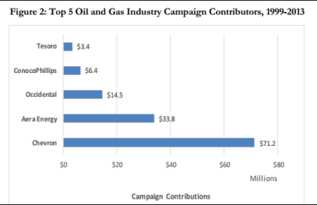Repost from The San Francisco Examiner
Our fight to stop the bomb trains traveling through our backyards
By Suma Peesapati, August 28, 2014
“This issue needs to be acted on very quickly. There is a very high risk here that hasn’t been addressed. We don’t need a higher body count before they move forward.”
It was a mark-my-words moment from National Transportation Safety Board Chairwoman Deborah Hersman at her farewell appearance before stepping down from the position in April.
She was speaking about the explosive growth of the use of unsafe tanker cars to haul crude oil extracted from the Bakken reserve in North Dakota and Montana to refineries across our nation. When involved in derailments, many of these cars carrying the highly volatile fossil fuel are vulnerable to puncture and explosion upon impact. They were the cars that were involved in explosions in Aliceville, Alaska, in November, Casselton, N.D., a month later and, of course, last summer’s horrific reckoning in Lac Megantic, Quebec.
Not two weeks after Hersman made her remarks, a train carrying Bakken crude derailed in Lynchburg, Va., igniting a roaring blaze and prompting the evacuation of the entire downtown. The tankers involved, however, weren’t the cars that the former chairwoman was warning about. They were a tougher, supposedly safer car tank car that the rail and oil industry is slowly moving toward adopting. It begs the question, though, are these newer cars going to be safe enough?
This question recently hit home when a local news station exposed a clandestine crude by rail-loading operation in Richmond, here in the Bay Area, that had been flying under the radar for months. After making a backroom deal with the local air district, Kinder Morgan secured approval to introduce this highly explosive fracked crude through urban Bay Area neighborhoods without any public notice or environmental review.
Within two weeks after the story broke, Earthjustice sued the air district and Kinder Morgan, demanding a full public airing of the project’s risks to public health and safety. A hearing on the merits of this case is scheduled for Sept. 5 in San Francisco Superior Court. While we await our day in court, Kinder Morgan is unloading its crude just a half-mile from Washington Elementary School, in a low-income community of color that the air district recognizes as already overburdened by the very same carcinogenic toxic air contaminants released by handling Bakken crude.
Piling on to this environmental injustice, this crude is being loaded onto tanker trucks that are not certified by California. Those trucks then travel on Bay Area roadways until this dangerous commodity reaches its ultimate destination — the Tesoro refinery in Martinez.
Tesoro Martinez is also accepting Bakken crude from similar rail-to-truck crude transfer operations in Sacramento, thereby compounding the risk of accident. With some of the most treacherous mountain passes in the country, and a dilapidated railway system that was never designed or upgraded to transport such dangerous cargo, these trains are ticking time bombs.
The anemic response from state and federal regulators has been disappointing. Fortunately, our state and federal environmental laws gives private citizens a voice demand more than “business as usual.”
Suma Peesapati is an attorney for San Francisco-based Earthjustice.
 may surprise you.
may surprise you.


You must be logged in to post a comment.